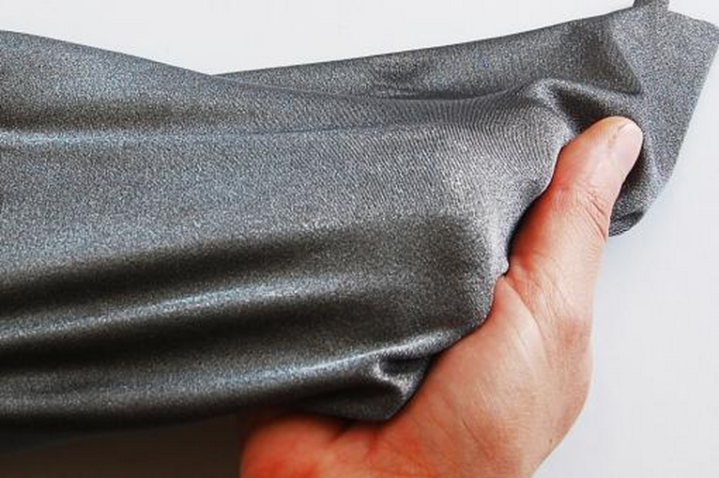
Rather than creating a new material altogether, the researchers developed a metallic ink that can be printed onto the surface of textiles to create flexible electronics or conductors. A press release by the university mentions that once the ink is printed to the surface of a textile, it doesn’t lose its conductivity — even when stretched to more than three times its original length. The researchers believe that the technology could be used in the development of flexible sensors, which could then be integrated into clothing and sportswear, paving the way for comfortable wearable electronics.
It might not sound particularly complicated at first, but developing stretchable electronics is a complicated endeavor. The problem is that, when you’re working with conductive materials, there’s trade-off between their mechanical and electrical characteristics. When you increase the conductive filler (aka, metals) in the material to achieve higher electrical conductivity, it also increases the stiffness of the material, which thereby diminishes the stretchability of it, and limits its potential applications.
But the University of Tokyo team has figured out a solution. To develop this ink, the researchers put together a mixture of silver flakes, organic solvent, fluorine rubber, and fluorine surfactant. The resulting ink can be applied to the surface of a textile, similar to how an office printer deposits ink onto a piece of paper.
Creating a flexible conductor with this solution requires just one step – printing the ink onto the surface of the textile. Once the ink has been applied to the surface of a textile, the silver flakes automatically assemble themselves, and cause material to become highly conductive.
In order to demonstrate the effectiveness of this approach, the researchers used their ink to print a muscle activity sensor onto a stretchable cloth. While the electrodes were printed on both sides of the material, the wiring was printed only on the external side. When it was all said and done, the wrist-borne muscle activity sensor printed from this method was able to measure the electrical potential of the muscle beneath it over an area of 2.5 square inches.
The researchers believe that their technique will make wearable devices more comfortable and widespread. If that works out, pretty soon all these clunky wristbands, clips, and patches will seem archaic.


